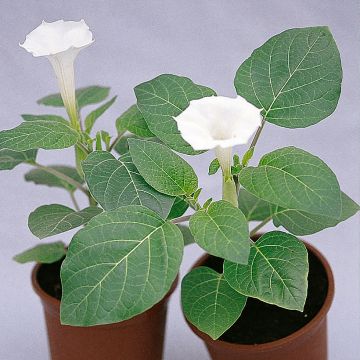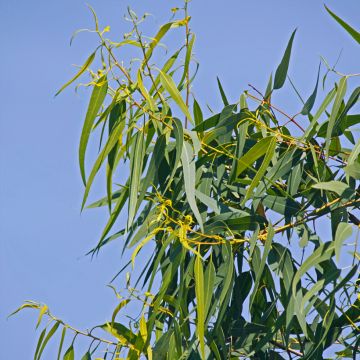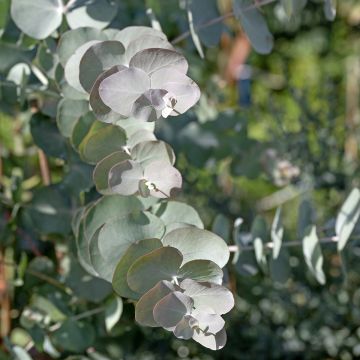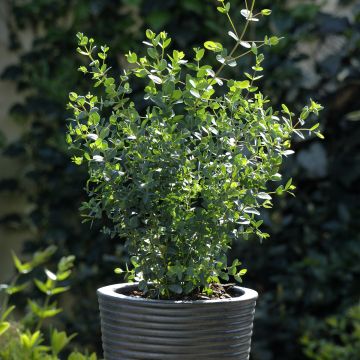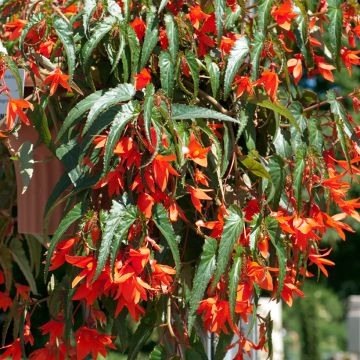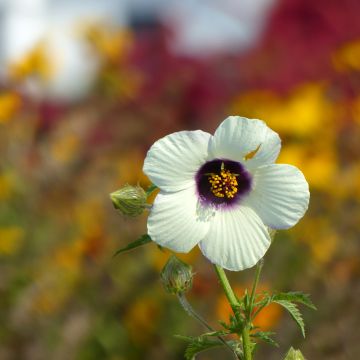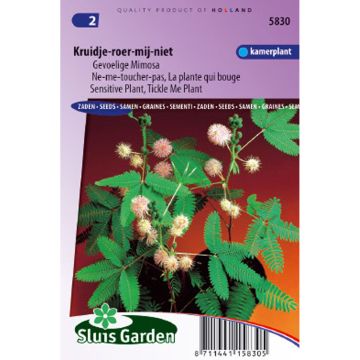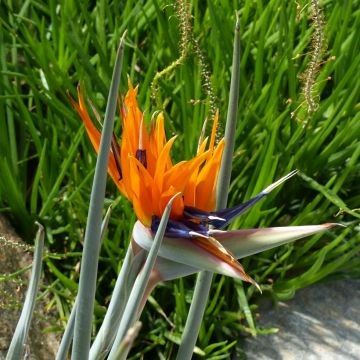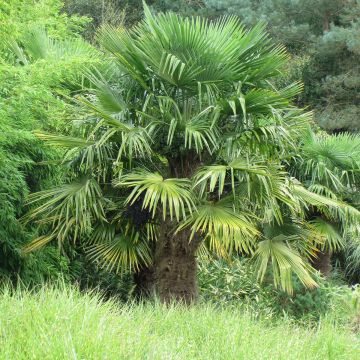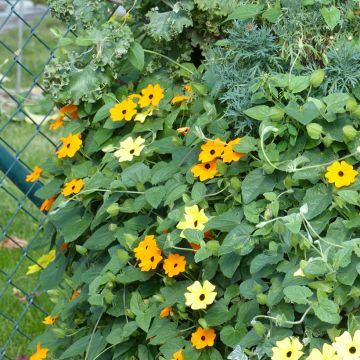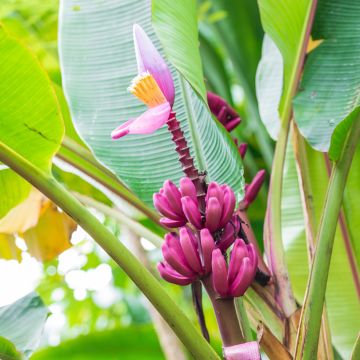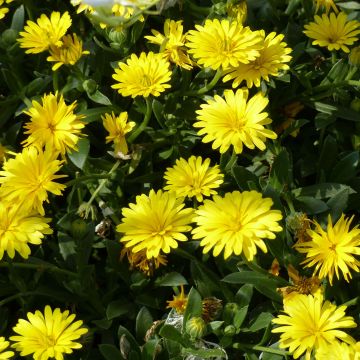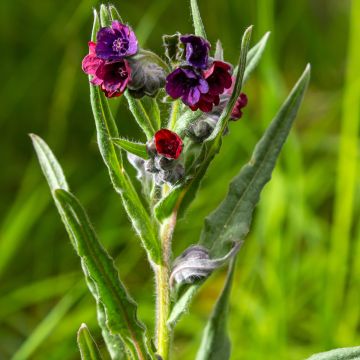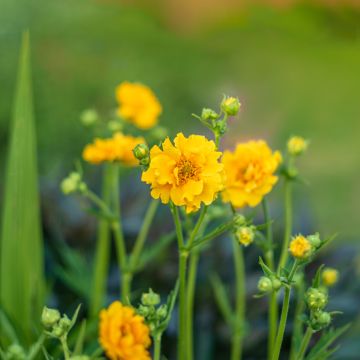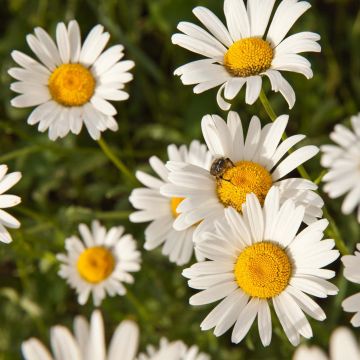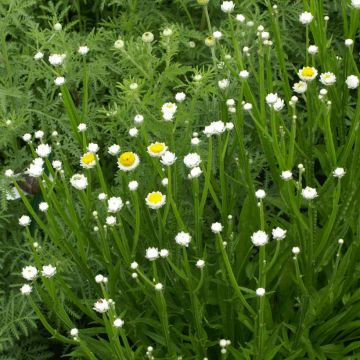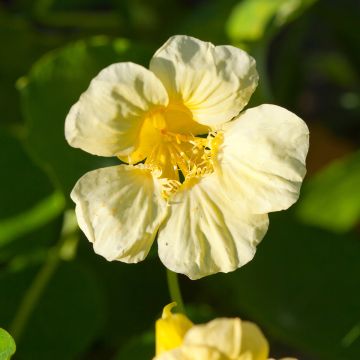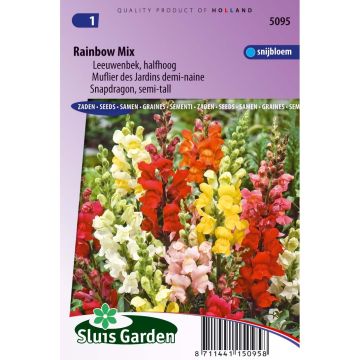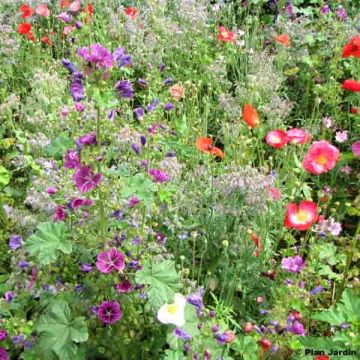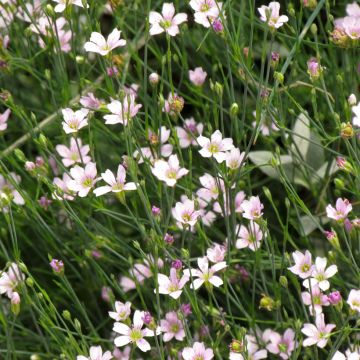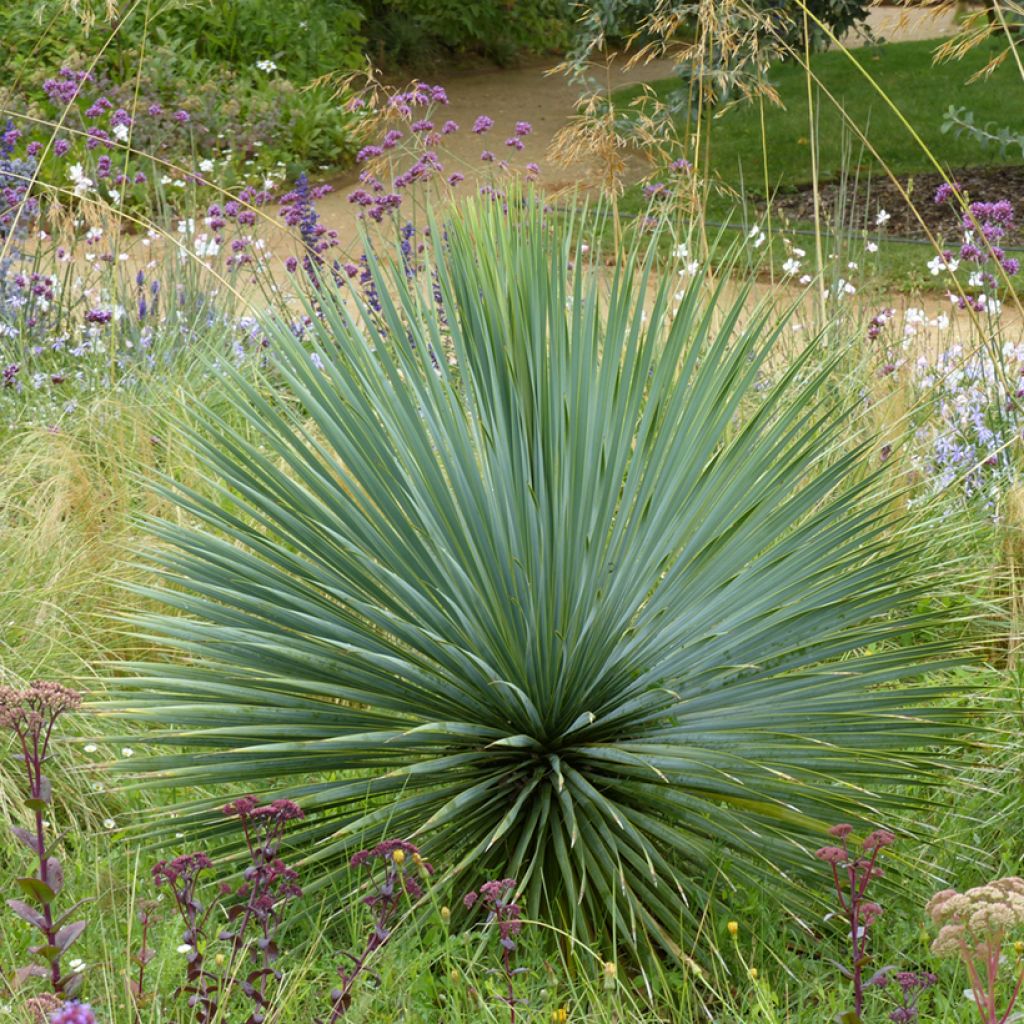

Yucca rostrata seeds - Beaked Yucca
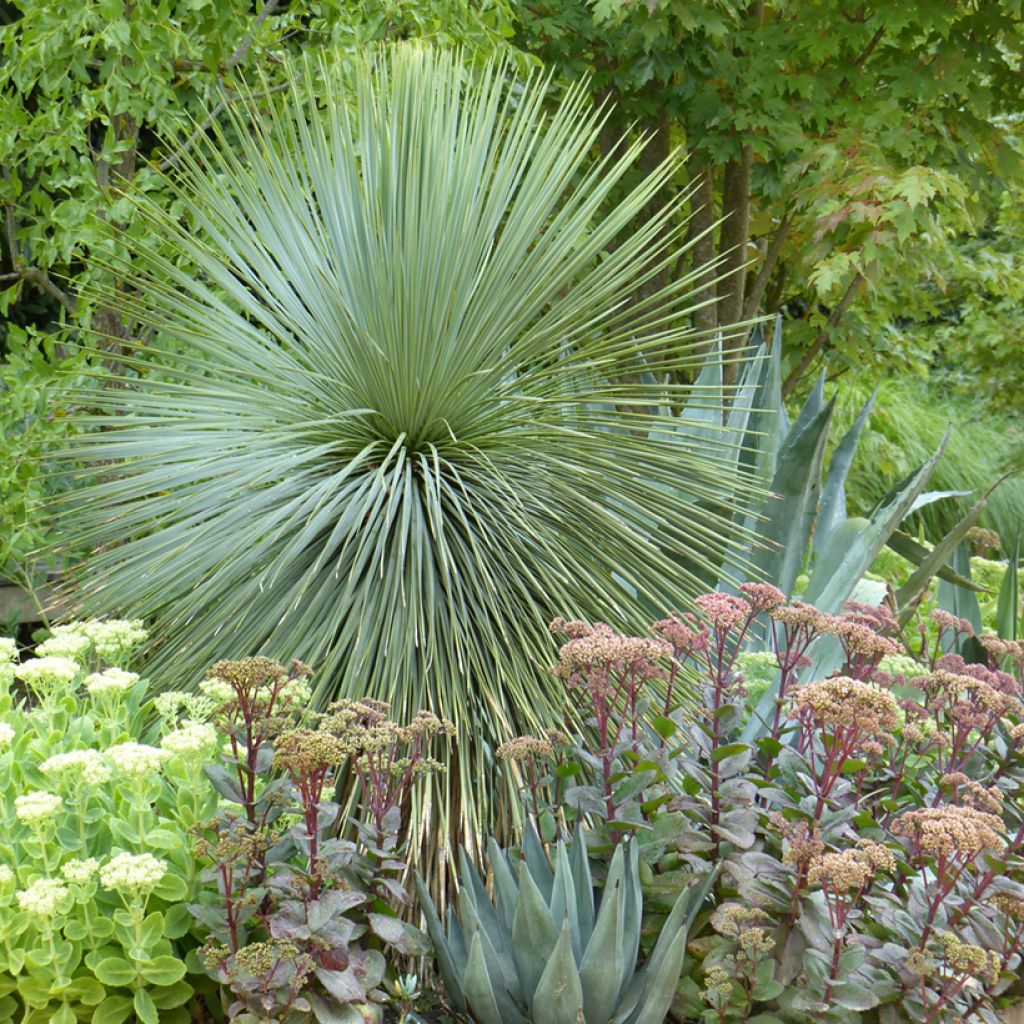

Yucca rostrata seeds - Beaked Yucca
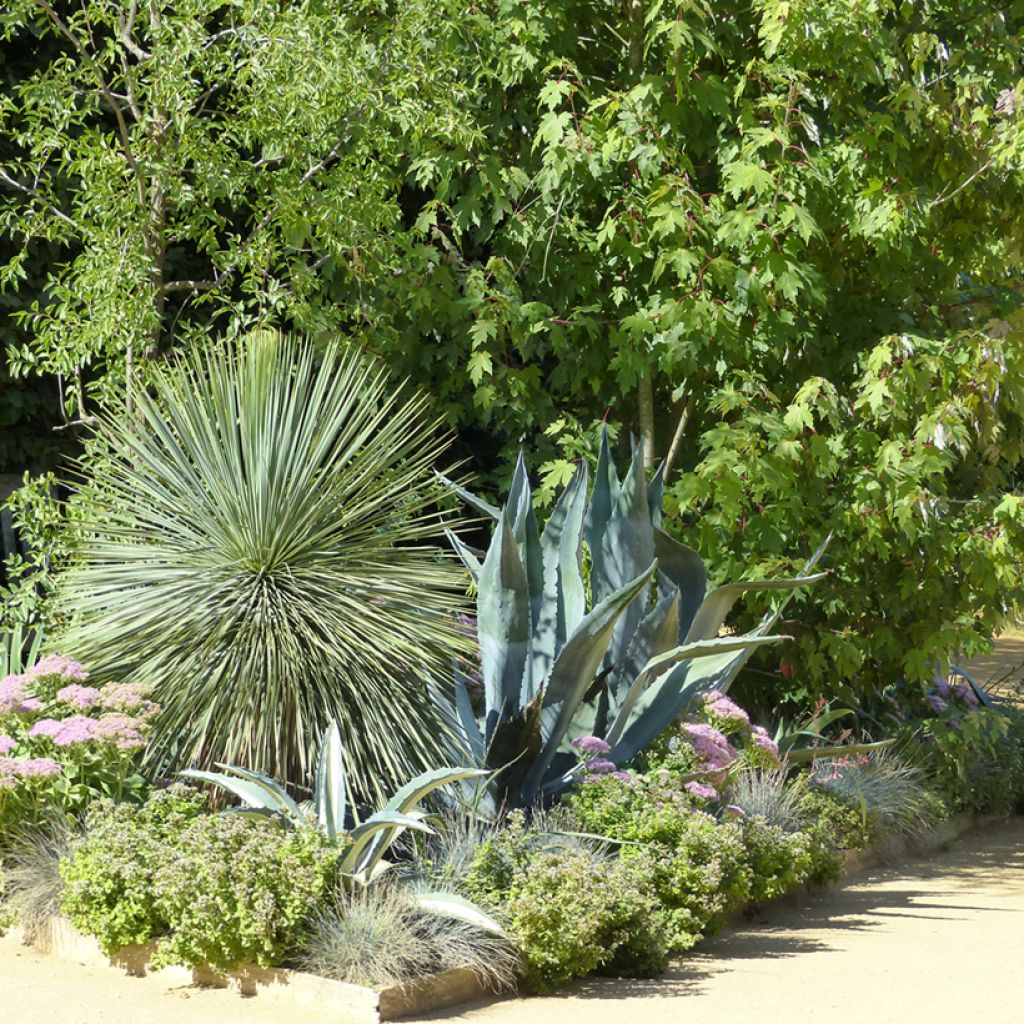

Yucca rostrata seeds - Beaked Yucca
Yucca rostrata seeds - Beaked Yucca
Yucca rostrata
Beaked Yucca, Big Bend Yucca, Silver Yucca
Why not try an alternative variety in stock?
View all →This plant carries a 6 months recovery warranty
More information
We guarantee the quality of our plants for a full growing cycle, and will replace at our expense any plant that fails to recover under normal climatic and planting conditions.
Seed-only orders are dispatched by sealed envelope. The delivery charge for seed-only orders is €3.90.
Does this plant fit my garden?
Set up your Plantfit profile →
Description
Yucca rostrata, also known as Blue Yucca or Beaked Yucca, is a species which is botanically interesting for its architectural habit and great resistance to both cold and drought. Its bluish-green leaves form a dense spherical crown on a false trunk, making it a highly ornamental plant for arid or Mediterranean gardens. Hardy down to -15°C, this yucca also withstands severe summer droughts. Purchased as seed, it will fulfill your exotic desires at little cost.
A member of the Asparagaceae family, Yucca rostrata originates from the desert areas of Texas and northern Mexico. This slow-growing plant can reach between 3 and 4.5 metres in height, sometimes more in ideal conditions. Its "trunk" is covered in the remains of dead leaves, giving it an interesting textured appearance. The 60 to 90 cm long leaves, are rigid and end in a thorn. They take on a green hue with silvery-blue highlights that catch the light and give the plant a unique radiance. The summer flowering appears after several years on a mature plant. It takes the form of upright inflorescences measuring up to 1.50 metres in height, bearing white to cream flowers that attract pollinators. The subsequent fruits are fleshy capsules shaped like a beak, which is what gave the species its name (rostrata). Note that rosettes that have flowered may stop growing, but the plant generally develops new lateral shoots.
Yucca rostrata is ideal as a focal point in a rock garden or in a "desert" style landscaping. It can be used as a single specimen or in a group of three to define an arid and rocky landscape. Its majestic habit pairs well with that of Agave americana and Opuntia gregoriana, for example. To cover the ground in such a setting, plant Senecio mandraliscae and Sedum acre 'Yellow Queen'. These plants share similar requirements for well-drained soil and full sun exposure, creating a harmonious composition suited to dry and hot climates.
Report an error about the product description
Yucca rostrata seeds - Beaked Yucca in pictures


Flowering
Foliage
Plant habit
Botanical data
Yucca
rostrata
Asparagaceae
Beaked Yucca, Big Bend Yucca, Silver Yucca
Yucca linearis
North America
Other Exotic plant seeds
Planting and care
To sow Yucca rostrata seeds, start by soaking the seeds in warm water for 24 hours to promote germination. Then, plant them in a light and well-draining soil mix, blended with sand to improve aeration. Sow at a depth of around 1 cm and maintain a stable temperature between 20 and 25°C. The seeds may take several weeks to germinate. Keep the substrate slightly moist, avoiding excess water to prevent rotting.
Cultivation:
For outdoor planting, choose a sunny location with well-drained soil, ideally sandy or rocky. Yucca rostrata tolerates poor and dry soils very well. Once planted, watering should be minimal: only in case of prolonged drought. It is advisable to add a gravel mulch around the base to improve drainage and prevent stagnant moisture. In cold climates, winter protection (mulching or fleece) may be necessary.
For container planting, use a wide, deep, and heavy container (with drainage holes) to stabilise the plant. A draining substrate, composed of potting soil mixed with coarse sand or gravel, is recommended. Place the pot in a very bright location, ideally in full sun. Water moderately, allowing the substrate to dry between each watering, and reduce watering further in winter. You can fertilise once a month during the growing season with a balanced fertiliser, but it is not obligatory.
Sowing period
Intended location
This item has not been reviewed yet - be the first to leave a review about it.
Flower seeds
Haven't found what you were looking for?
Hardiness is the lowest winter temperature a plant can endure without suffering serious damage or even dying. However, hardiness is affected by location (a sheltered area, such as a patio), protection (winter cover) and soil type (hardiness is improved by well-drained soil).

Photo Sharing Terms & Conditions
In order to encourage gardeners to interact and share their experiences, Promesse de fleurs offers various media enabling content to be uploaded onto its Site - in particular via the ‘Photo sharing’ module.
The User agrees to refrain from:
- Posting any content that is illegal, prejudicial, insulting, racist, inciteful to hatred, revisionist, contrary to public decency, that infringes on privacy or on the privacy rights of third parties, in particular the publicity rights of persons and goods, intellectual property rights, or the right to privacy.
- Submitting content on behalf of a third party;
- Impersonate the identity of a third party and/or publish any personal information about a third party;
In general, the User undertakes to refrain from any unethical behaviour.
All Content (in particular text, comments, files, images, photos, videos, creative works, etc.), which may be subject to property or intellectual property rights, image or other private rights, shall remain the property of the User, subject to the limited rights granted by the terms of the licence granted by Promesse de fleurs as stated below. Users are at liberty to publish or not to publish such Content on the Site, notably via the ‘Photo Sharing’ facility, and accept that this Content shall be made public and freely accessible, notably on the Internet.
Users further acknowledge, undertake to have ,and guarantee that they hold all necessary rights and permissions to publish such material on the Site, in particular with regard to the legislation in force pertaining to any privacy, property, intellectual property, image, or contractual rights, or rights of any other nature. By publishing such Content on the Site, Users acknowledge accepting full liability as publishers of the Content within the meaning of the law, and grant Promesse de fleurs, free of charge, an inclusive, worldwide licence for the said Content for the entire duration of its publication, including all reproduction, representation, up/downloading, displaying, performing, transmission, and storage rights.
Users also grant permission for their name to be linked to the Content and accept that this link may not always be made available.
By engaging in posting material, Users consent to their Content becoming automatically accessible on the Internet, in particular on other sites and/or blogs and/or web pages of the Promesse de fleurs site, including in particular social pages and the Promesse de fleurs catalogue.
Users may secure the removal of entrusted content free of charge by issuing a simple request via our contact form.
The flowering period indicated on our website applies to countries and regions located in USDA zone 8 (France, the United Kingdom, Ireland, the Netherlands, etc.)
It will vary according to where you live:
- In zones 9 to 10 (Italy, Spain, Greece, etc.), flowering will occur about 2 to 4 weeks earlier.
- In zones 6 to 7 (Germany, Poland, Slovenia, and lower mountainous regions), flowering will be delayed by 2 to 3 weeks.
- In zone 5 (Central Europe, Scandinavia), blooming will be delayed by 3 to 5 weeks.
In temperate climates, pruning of spring-flowering shrubs (forsythia, spireas, etc.) should be done just after flowering.
Pruning of summer-flowering shrubs (Indian Lilac, Perovskia, etc.) can be done in winter or spring.
In cold regions as well as with frost-sensitive plants, avoid pruning too early when severe frosts may still occur.
The planting period indicated on our website applies to countries and regions located in USDA zone 8 (France, United Kingdom, Ireland, Netherlands).
It will vary according to where you live:
- In Mediterranean zones (Marseille, Madrid, Milan, etc.), autumn and winter are the best planting periods.
- In continental zones (Strasbourg, Munich, Vienna, etc.), delay planting by 2 to 3 weeks in spring and bring it forward by 2 to 4 weeks in autumn.
- In mountainous regions (the Alps, Pyrenees, Carpathians, etc.), it is best to plant in late spring (May-June) or late summer (August-September).
The harvesting period indicated on our website applies to countries and regions in USDA zone 8 (France, England, Ireland, the Netherlands).
In colder areas (Scandinavia, Poland, Austria...) fruit and vegetable harvests are likely to be delayed by 3-4 weeks.
In warmer areas (Italy, Spain, Greece, etc.), harvesting will probably take place earlier, depending on weather conditions.
The sowing periods indicated on our website apply to countries and regions within USDA Zone 8 (France, UK, Ireland, Netherlands).
In colder areas (Scandinavia, Poland, Austria...), delay any outdoor sowing by 3-4 weeks, or sow under glass.
In warmer climes (Italy, Spain, Greece, etc.), bring outdoor sowing forward by a few weeks.

































